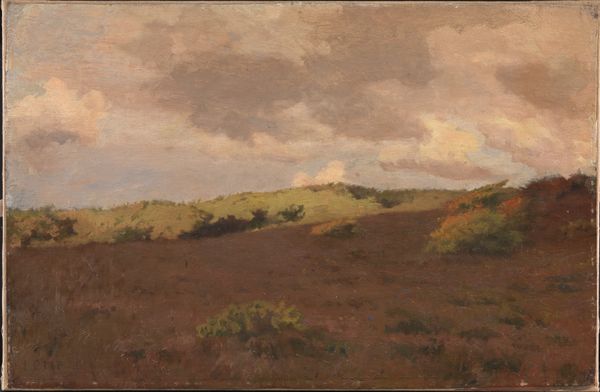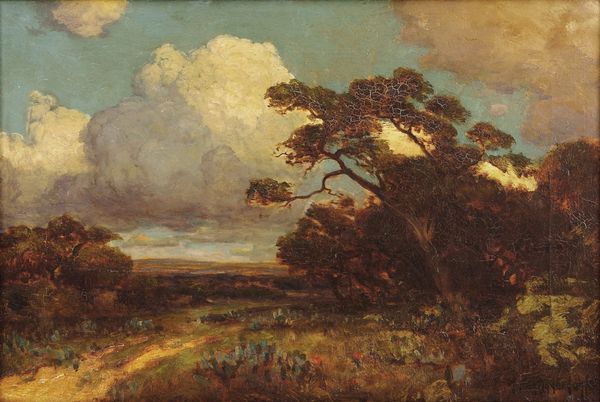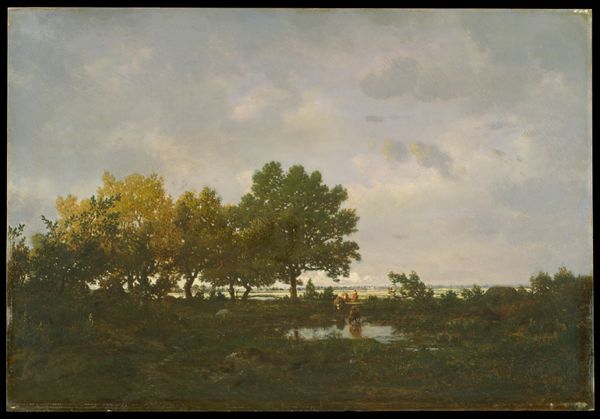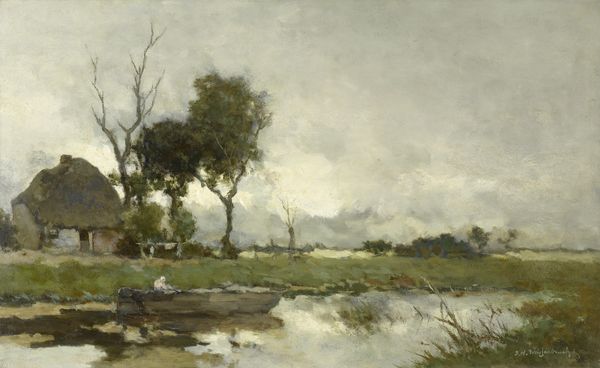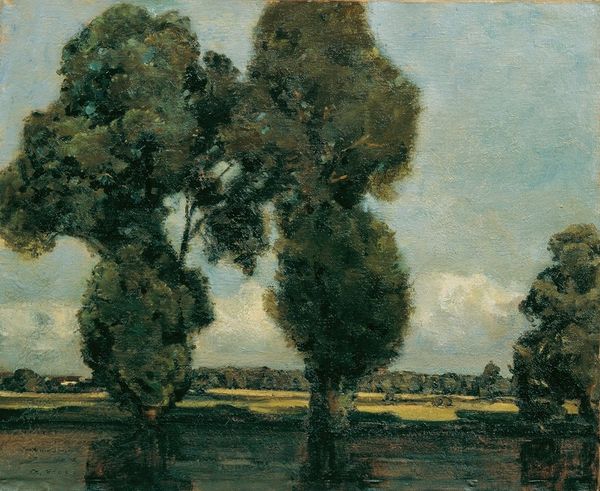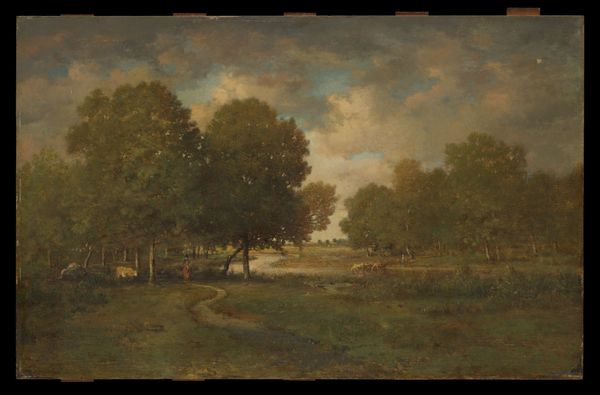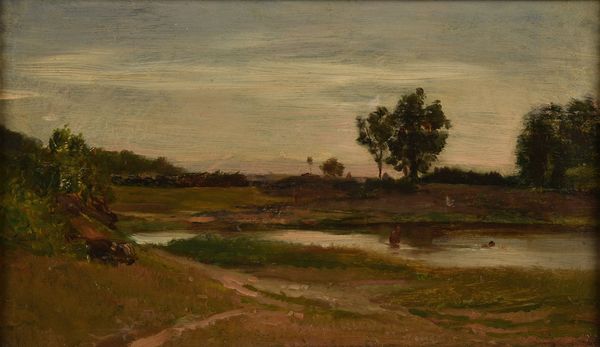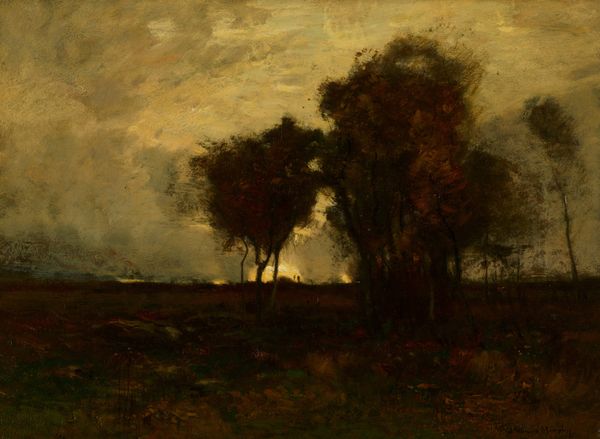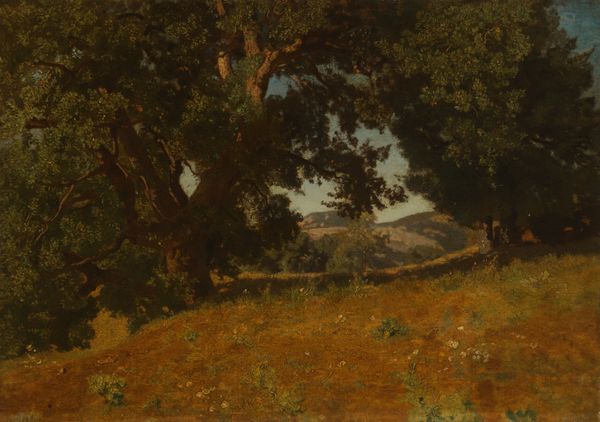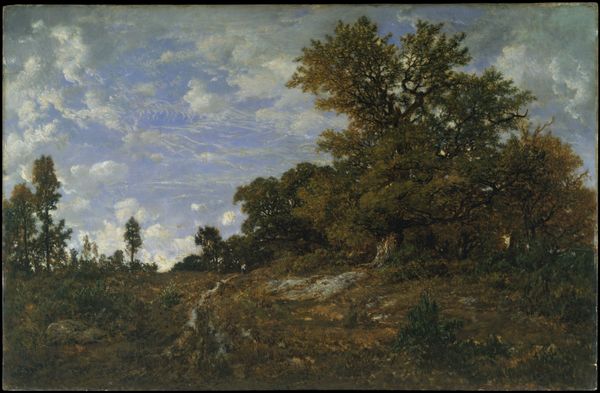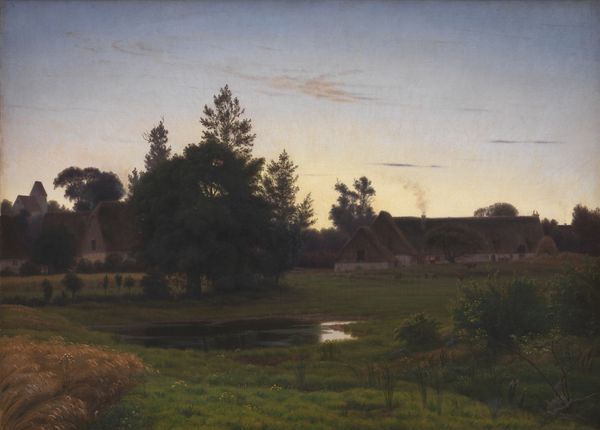
Dimensions: 20 × 26 in. (50.8 × 66 cm)
Copyright: Public Domain
Curator: William A. Harper's oil on canvas work, "The Trees, Early Afternoon, France," painted sometime between 1900 and 1910, greets us today. Editor: It has a very tranquil feeling. The hazy light and the way the forms are suggested rather than defined lend a dreamlike quality. Curator: Yes, Harper masterfully employs Impressionistic techniques, visible in the broken brushstrokes and the emphasis on light and atmosphere. Notice the dappled effect on the grass. Editor: And that hazy distant cityscape on the horizon? That pulls me in. Harper's impression of nature as serene seems idyllic. Is that a field worker depicted by the tree? What would daily rural life have looked like for French people in the early 1900s? The art captures an image of harmony and peace, but I also want to reflect upon its socio-economic context. Curator: Your attention to the sociopolitical underpinnings is valid. However, the harmony here relies on formal strategies as well. Harper divides the canvas horizontally, establishing a clear foreground, middle ground, and background. The careful placement of the trees, framing the composition. Editor: The subdued palette really contributes to the peaceful mood too, I see a variety of greens and blues; it creates this sense of calm and invites reflection on themes of nature. It does have a harmony in technique. Curator: Precisely, there’s an interesting dialogue between the natural forms and how the artist renders them—it reflects his interpretation of a natural landscape. Editor: Harper uses a visible stroke style; with that method, he doesn’t depict life precisely. Instead, he seems to evoke or suggest feelings around his environment. This vision could potentially encourage people of all backgrounds to notice a collective relationship to landscape art history. Curator: Indeed, focusing on his process allows us to unpack that complexity in interesting ways. Editor: Thinking about "The Trees" has helped me question my own perspective today. I want to understand how these artworks serve society today. Curator: Yes, and by paying close attention to elements, principles and material dimensions. There are always more readings in plain sight.
Comments
No comments
Be the first to comment and join the conversation on the ultimate creative platform.
